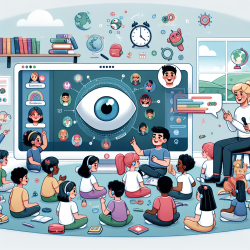Introduction
In the evolving field of speech-language pathology, the integration of insights from related disciplines can significantly enhance therapeutic outcomes. One such field is clinical virology, as detailed in the research article "A History of the Pan American Society for Clinical Virology" by G.D. Hsiung. This article chronicles the development of clinical virology practices and their implications for patient care. By understanding these developments, speech-language pathologists can refine their approaches, particularly in the context of viral impacts on speech and language development.
The Intersection of Virology and Speech-Language Pathology
Clinical virology has made significant strides in rapid viral diagnosis, which is crucial for timely interventions. This is particularly relevant for speech-language pathologists working with children who may have viral infections affecting their communication skills. For instance, viruses such as cytomegalovirus (CMV) and herpes simplex virus (HSV) can have neurological impacts that influence speech and language development.
By understanding the advancements in diagnostic virology, practitioners can better identify and manage viral-related speech and language issues. This knowledge allows for more targeted interventions, improving outcomes for affected children.
Data-Driven Decisions in Therapy
The Pan American Society for Clinical Virology (PASCV) emphasizes data-driven decisions, a principle that resonates with speech-language pathology. By leveraging data from virology research, therapists can make informed decisions about intervention strategies. This approach ensures that therapy is not only effective but also tailored to the specific needs of each child.
For example, data on the prevalence and impact of specific viruses can guide screening processes and early intervention strategies, ensuring that children receive the appropriate support as early as possible.
Encouraging Further Research
The history of PASCV highlights the importance of continuous research and collaboration. Speech-language pathologists are encouraged to engage with ongoing research in virology and related fields. This engagement can lead to innovative therapeutic approaches and improved patient outcomes.
Practitioners can also contribute to research by documenting case studies and sharing findings with the broader community. This collaborative approach not only enhances individual practice but also contributes to the advancement of the field as a whole.
Conclusion
Integrating insights from clinical virology into speech-language pathology can significantly enhance therapeutic outcomes for children. By understanding the impact of viral infections on communication and leveraging data-driven decisions, practitioners can provide more effective and personalized care.
To delve deeper into the research and its implications, I encourage you to read the original research paper, A history of the Pan American Society for Clinical Virology.










